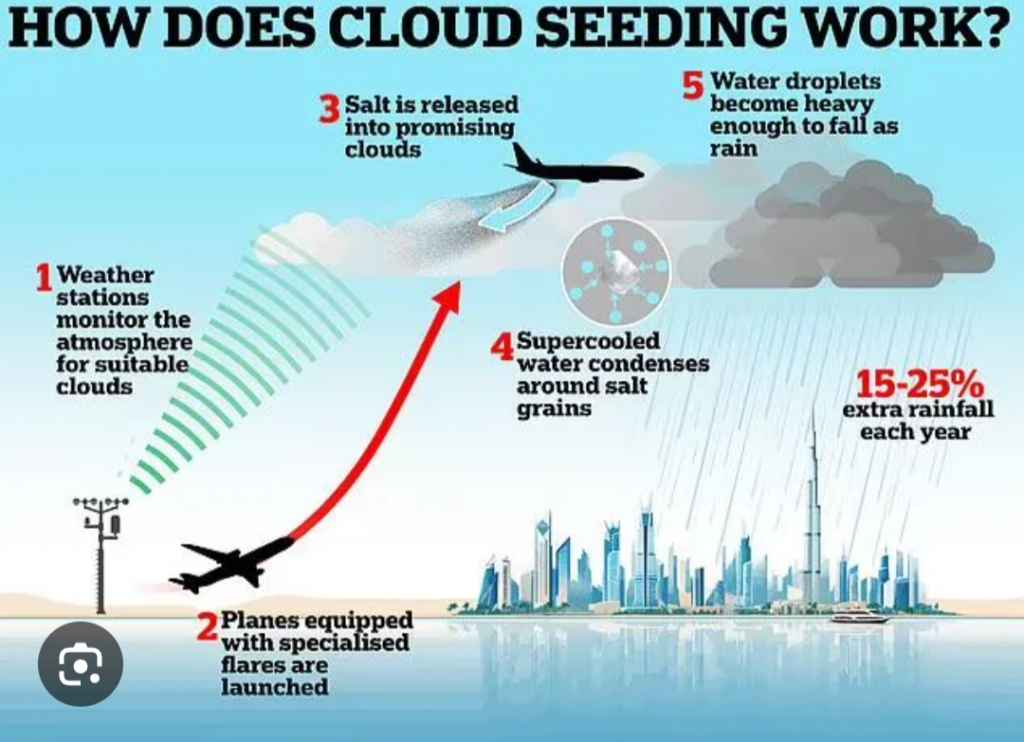
These aren’t ordinary particles. They’re tiny bits of crushed-up silver iodide, a crystal-like photosensitive substance once used in photography.
But it’s not used to take pictures out in the mountains. It’s meant to make snow.
As the wind whips the particles across the mountaintops, drafts of air sweep them higher into the sky—so high that some of them eventually touch the clouds. There, an elegant transformation takes place.
California, Nevada, Colorado, New Mexico, Wyoming, Kansas, Oklahoma, Texas, North Dakota, Utah, and Idaho.
The crystalline silver iodide particles have a structure similar to ice—and inside a cloud, like attracts like. Water droplets begin to cluster around the particles, freezing solid as they gather together.
These frozen clusters eventually grow too heavy to stay in the air. They fall from the cloud and drift gently toward the Earth, dusting the mountaintops with fresh snow
This is not a page from a science fiction novel. “Cloud seeding” is a real practice—in fact, it’s been around for decades. It’s used today to boost precipitation in at least eight states across the western U.S. and dozens of countries around the world.
Interest in cloud seeding is growing as temperatures steadily rise, increasing drought risks in places like the Mountain West. But there’s a catch. Scientists aren’t sure how well cloud seeding works today, let alone in a warmer climate.

Amid growing concerns about water resources in the western U.S., scientists are working to answer those questions.
Today, cloud seeding research represents the cutting edge of weather and climate science—a convergence of questions about the influence of warming on our dwindling water resources and our ability to control those consequences.
“Certainly we’re in a better position now to address that question than we were 10 years ago,” said Jeff French, an atmospheric scientist at the University of Wyoming. “The state of the science has progressed to the point that it is a question that we can and should be trying to address now.”
Cloud seeding can take a few different forms. In some places, it’s used to boost rainfall or prevent hailstorms. But in the U.S., it most commonly aims to enhance snowfall, and usually with silver iodide.



